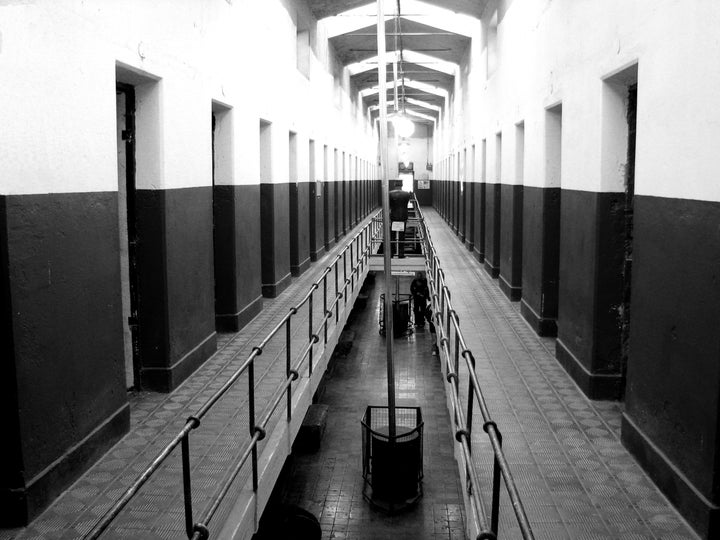
Dis.rup.tion (noun) - disturbance or problems that interrupt an event, activity, or process.
We are living in an age of disruption. And not a disruption that some would automatically associate with the definition above. A new definition may have to be created to capture what is going on right now. Looking at an industry that has done business in almost the same exact way as when the industry started and seeing that it can be changed. For the benefit of the end user. Disruption is good. Disruption is paving the way for innovation.
Uber disrupting taxis. AirBnB disrupting hotels. FinTech disrupting the way we invest and save.
So many tried and true industries are facing a disruption of some nature. Causing some of them to scramble to keep up. All the while the consumer is benefiting.
But what about a disruption that does not affect us as consumers, but as a society and as taxpayers? What about leveraging the advancements of technology to help a group of people that are often overlooked, and in turn have positive impact on society itself?
That is what one NY based startup is trying to do. Virtual Rehab’s goal is to reduce the number of repeat offenses and re-incarceration rates by leveraging Virtual Reality to educate and rehabilitate. They believe every person in life deserves a second chance, including prisoners.
The facts:
The Global Prison Population total is currently at 10.5 million (out of which 2.2 million are in the U.S. and 1.6 million are in China) according to the International Centre for Prison Studies (October 2016). Since the war on drugs started in 1970, America's prison population has surged 700 percent to 2.4 million according to Business Insider’s “13 Signs that America’s Prison System is Out of Control” (April, 2012).
As published by Stephanie Slifer (April 23, 2014) on CBS news, about 68% of 405,000 prisoners released in 30 states were arrested for a new crime within three years of their release from prison, and 77% were arrested within five years, according to a report by the Bureau of Justice Statistics (BJS).
In addition, according to the Recidivism of State Prisoners report, within five years of release, 82% of property offenders were arrested for a new crime, compared to 77% of drug offenders, 74% of public order offenders and 71% of violent offenders.
These numbers are sobering. The US prison system is in need of a disruption. It is an industry ready to be disrupted, in need of a disruption and any improvement there would impact society as a whole for the better. If you don’t believe that the prison system is an industry, take note of these numbers:
The FY 2016 US Budget allocated is $8.8 Billion for Prisons & Detention (according to the U.S. Department of Justice FY 2016 Budget Request) along with an approximate FY 2016 Global Budget of $35.2 Billion. CoreCivic (formerly Corrections Corporation of America) is a company that owns and manages private prisons and detention centers and operates others on a concession basis. Last fiscal year they generated 1.76B in revenue. They are publicly traded on the NYSE under the ticker symbol CXW.
Virtual Rehab was founded by Dr. Raji Wahidy, formerly of Vodafone and Ericsson. In an interview with Dr. Wahidy, he stated, “ I want to make a difference in this world, which is exactly what led me to launching Virtual Rehab to leverage the advancements in technology, particularly Virtual Reality, to reduce the number of inmates repeated offenses and re-incarceration rates. It’s about time that we leverage technology for the wider social good and to drive positive change within our global community.”
"Whatever they have in place now, it's not working," said Wahidy. "Every person has good in them. It's up to us to whether we enrich this small good and make it larger or make it worse by using prison as punishment."
Virtual Reality is an emerging technology and most often associated with gaming. However, its use in for the treatment of mental health disorders and issues is gaining both traction and success. The Virtual Human Interaction Lab at Stanford University run by Dr. Jeremy Bailenson is currently working on various projects from Empathy, Learning in Immersive VR and Sustainable Behaviors. Helping patients overcome difficult experiences is far from the only new use of VR. The technology's powerful impact on the brain can also be used to generate realistic levels of empathy, tangible reductions in pain and cure phobias, say researchers at Stanford University’s Virtual Human Interaction Lab.
“There’s tremendous potential for VR to do good,” says Jeremy Bailenson.
One of Virtual Rehabs biggest challenges, “...that we have faced so far is in getting federal and state authorities to speak with us. Since Virtual Reality has been predominantly used within the gaming industry, there is always this thought that we are attempting to entertain inmates rather than rehabilitate them.”
Leveraging a technology like VR will allow prisoners, through the use of educational programs, to learn both soft and hard skills. Using haptic feedback (this is the use of the sense of touch in a user interface design to provide information to an end user.) the inmates will be put in more realistic scenarios, thereby increasing the speed of learning and retention of what they learned. Educational scenarios will range from job training, changing a car battery to social conflicts:
"We will put them in a real-life scenario where they are confronted with some sort of family violence between a husband and a wife or a boyfriend and a girlfriend. Then we will monitor how they react, whether or not they're going to take the proper action to rectify the situation,"
Training that is currently missing from today's prison education.
"The proper action in this case would be that they try to interject and separate the two, and if they don't wish to do that, they should call 911 and ask for assistance."
The use of psychiatrists in prisons can be both costly and ineffective. Inmates are often afraid to open up to a stranger. Untrusting and afraid to appear weak in front of their peers. Rehabilitation is a long process and one that is being underserved by the current system."It's a win-win scenario. We're going to lower our taxes, build a better community, build a better future for those who deserve a second chance in life."
This was originally published on Virtual Reality Observer
